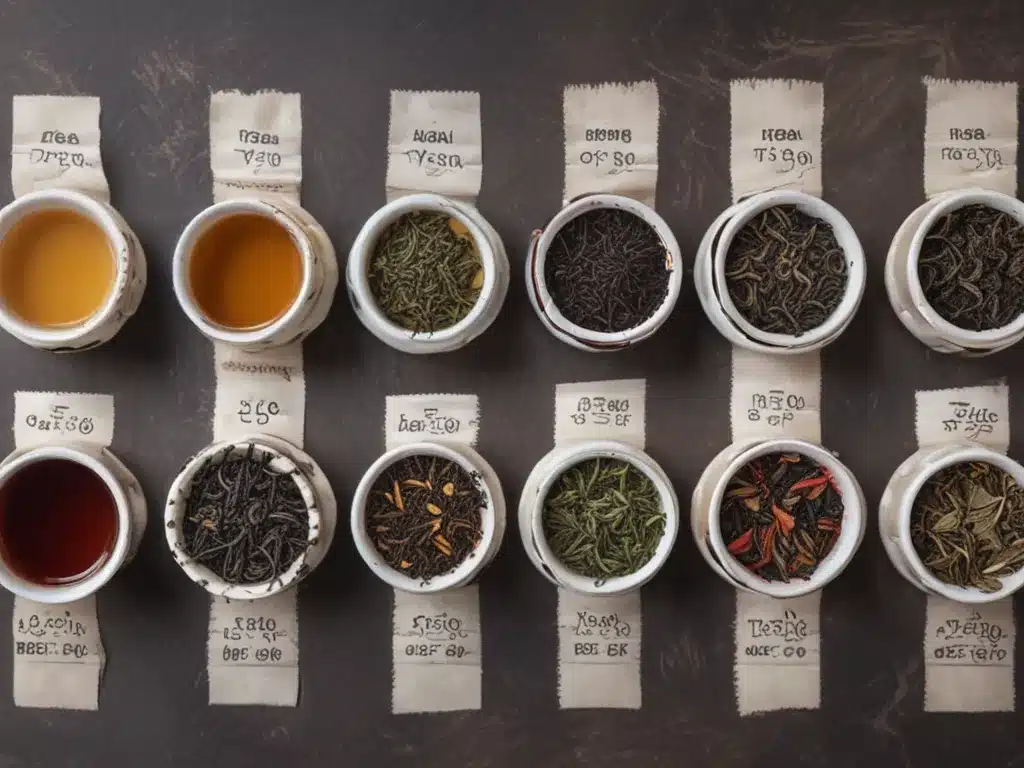
Green Tea Temperature
As green tea is one of the least processed types of tea, it is more delicate and requires a lower brewing temperature than other teas. I’ve found through my experience that the ideal range for brewing green tea is between 160-175°F (70-80°C). Water that is too hot, over 175°F, can lead to a bitter flavor in the cup.
The first question when steeping green tea is how hot should the water be? Through trial and error, I’ve learned that 165°F (74°C) produces a sweet and vegetal flavor profile in most green teas. However, the temperature can be adjusted up or down slightly based on personal preference and the variety of green tea. Some green teas prefer a temperature on the lower end of the spectrum while others tolerate water closer to 175°F.
A good way to determine the ideal green tea steeping temperature is to start with 165°F water and then adjust higher or lower in 5 degree increments on subsequent steepings to discover what brings out the best flavors. Always aim to stay below the 175°F/80°C threshold to avoid bitterness. Proper water temperature is key for extracting optimum flavor from delicate green tea leaves.
Black Tea Temperature
Compared to green tea, black tea has undergone more oxidation during processing and can withstand higher brewing temperatures. The suitable range for steeping black tea is between 195°F to 212°F (90-100°C).
One question I often get is does temperature matter for black tea? While black tea has more tolerance for hot water than green tea, the temperature can still impact flavor. I find the ideal steeping range is between 200°F to 208°F (93-98°C) for the majority of black teas. Within this zone, subtleties in the tea can be better tasted.
Too low a temperature, such as 190°F or under, may result in an under-extracted brew lacking in flavor. On the flip side, if the water is too hot, over 208°F, tannins and bitterness can overpower more nuanced tea notes. So for the best cup, aim to brew black tea with water that has cooled slightly from a full boil. Adjusting the water temperature a few degrees can make a surprising difference in taste.
Oolong Tea Temperature
As a semi-oxidized tea, oolong tea requires a brewing temperature between green tea and black tea. Most oolong teas prefer a temperature range of 185°F to 205°F (85-96°C).
One question I often consider is how does water temperature affect oolong tea flavor? From my experience steeping oolong tea, I’ve noticed that a temperature that is too low, under 185°F, may cause the leaves to unfurl slowly and release flavors gradually over multiple infusions but fail to fully extract the complex layers. On the other hand, if the water is over 205°F, more astringent notes can overpower the floral, fruity, and roasted elements unique to oolong tea.
The ideal middle ground for tasting nuanced oolong tea flavors seems to be 190°F to 200°F (88-93°C). Slightly cooler water on the lower end works well for delicate oolong teas while a temperature closer to the higher end is suitable for bolder, fuller-bodied oolong teas. As with other tea types, small adjustments in brewing temperature make a difference.
White Tea Temperature
As one of the least processed teas, white tea matches green tea in delicacy and requires an even lower brewing temperature of 150°F to 170°F (65-77°C).
One question that often arises is how does water temperature affect white tea? From my tasting experiments with white tea, I’ve noticed that if the water is too hot, over 170°F, tea flavors like jasmine and floral notes are replaced with bitterness. Using water that is too cool, below 150°F, does not fully extract the tea’s natural sweetness either.
The ideal range I’ve found for brewing most white teas is 155°F to 165°F (68-74°C) to gently coax out the tea’s light aromas without scorching delicate white tea leaves. Some prefer the lower end of 155-160°F for especially tender varieties. Small adjustments within this optimal range make a big difference in bringing out each distinctive white tea character.
Herbal Teas Temperature
Not true teas but plant infusions, herbal teas can be brewed with a wider range of temperatures depending on the specific herbs. Most herbal tea blends steep nicely between 180°F to 212°F (82-100°C).
One factor when steeping herbal teas is how does temperature affect flavor extraction? From my experience, tougher herbs like rooibos need near-boiling water around 205°F to fully release their taste. More delicate herbs such as peppermint prefer the lower end, around 185-190°F, to preserve their natural aromas. Fruity blends often work well between 195-200°F.
As herbal teas encompass a variety of plant materials, I find it’s best to refer to individual tea packaging or brew a test cup across the range to determine what suits each blend best. Proper water temperature selection helps optimize flavor potential from the diverse plant ingredients that together create soothing herbal tea brews.
Comparing Tea Types by Brewing Temperature
| Tea Type | Ideal Brewing Temperature |
|---|---|
| Green Tea | 160-175°F (70-80°C) |
| Black Tea | 195-212°F (90-100°C) |
| Oolong Tea | 185-205°F (85-96°C) |
| White Tea | 150-170°F (65-77°C) |
| Herbal Tea | 180-212°F (82-100°C) |
In summary, selecting the right water temperature for steeping different tea types makes all the difference in fully enjoying diverse tea flavors. Small adjustments within the ideal temperature range for each type ensures the best possible tea brewing experience. Experimenting helps determine individual preferences to craft the perfect cup.






